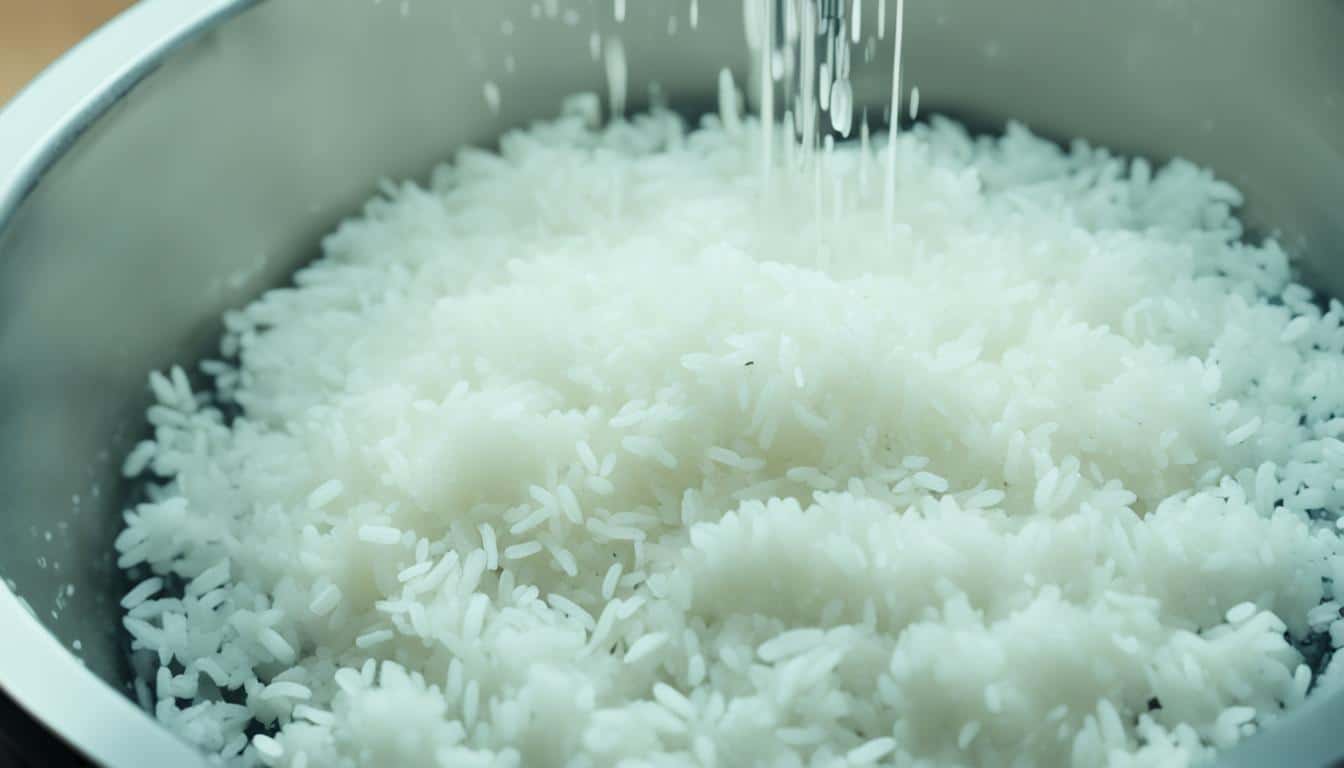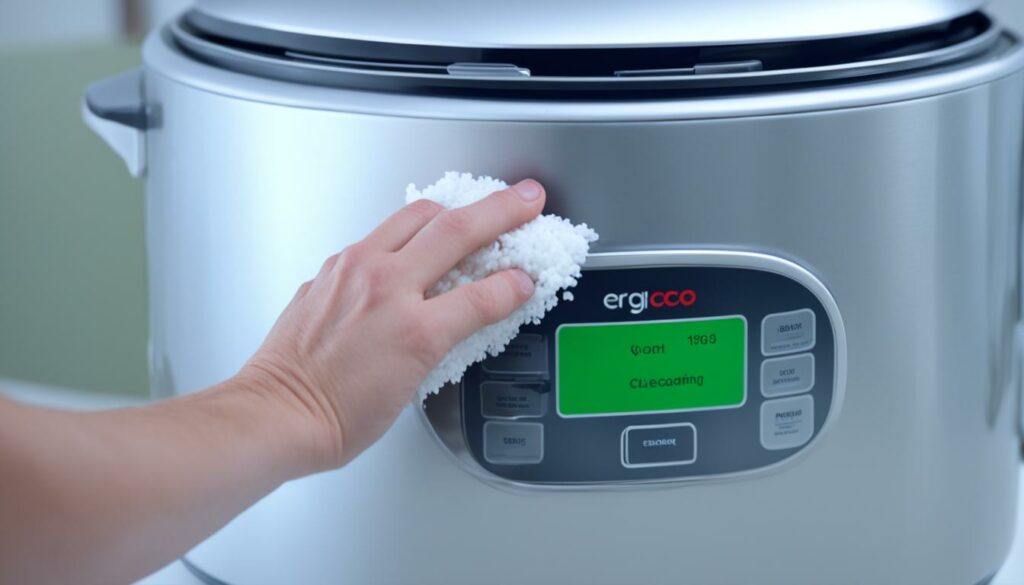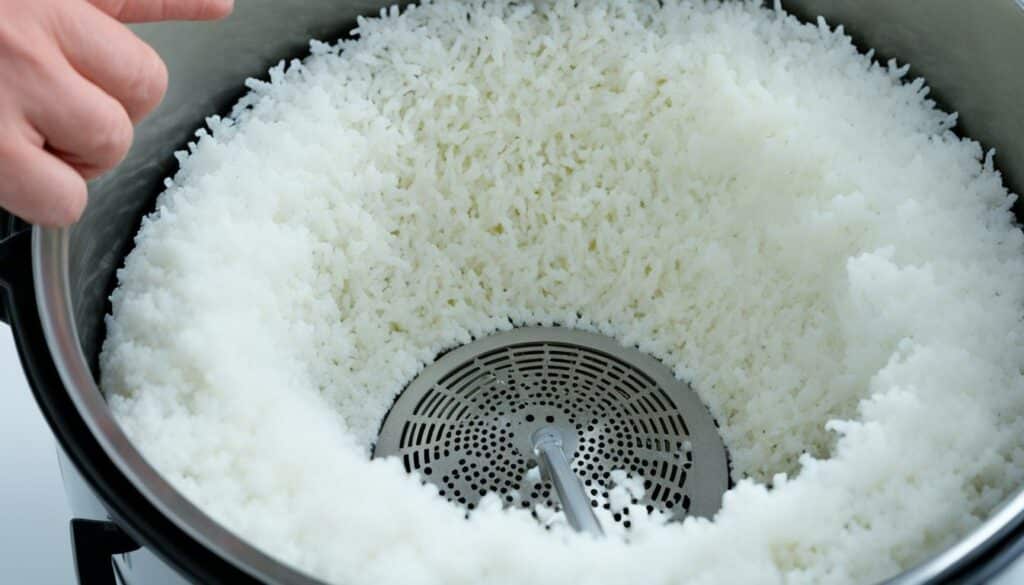
Welcome to our comprehensive guide on how to clean your rice cooker with ease. Proper maintenance and care are essential for keeping your rice cooker in optimal condition, ensuring deliciously cooked rice every time. By following the simple steps outlined below, you’ll be able to maintain the longevity and performance of your appliance for years to come.
Why Cleaning Your Rice Cooker Is Important
Before diving into the cleaning process, it’s essential to understand why regular cleaning is crucial. Regular maintenance will prevent food residues from building up, leading to better-tasting rice and eliminating any potential bacterial growth. By keeping your rice cooker clean, you can ensure a healthy cooking environment and prolong the lifespan of your appliance.
Keeping your rice cooker clean not only enhances the flavor and quality of your cooked rice but also contributes to a safe and sanitary cooking environment. Food residues left in the cooker after each use can accumulate over time, leading to a foul odor, unappealing appearance, and potential health risks.
Regular cleaning prevents the formation of stubborn stains and crusts that can be difficult to remove if left unattended. It also reduces the risk of bacterial growth, ensuring that your cooked rice is safe to consume. Additionally, maintaining a clean rice cooker promotes better heat distribution, resulting in evenly cooked rice and preventing any potential damage to the appliance.
Benefits of Regular Rice Cooker Cleaning:
- Enhanced rice flavor and quality
- Prevention of bacterial growth
- Improved heat distribution
- Prolonged lifespan of the appliance
- Sanitary cooking environment
Regular maintenance will prevent food residues from building up, leading to better-tasting rice and eliminating any potential bacterial growth.
To ensure your rice cooker remains in optimal condition, incorporate regular cleaning into your kitchen routine. The following sections will guide you through the step-by-step cleaning process, offering effective hacks and techniques to keep your rice cooker sparkling clean.
Cleaning the Exterior
When it comes to cleaning your rice cooker, it’s essential not to overlook the exterior surfaces. The best way to clean your rice cooker is to start by unplugging it and allowing it to cool down completely. This ensures your safety and prevents any potential damage to the appliance.
Gently wipe the exterior surfaces using a damp cloth or sponge. This will remove any loose dirt, dust, or stains that may have accumulated over time. For stubborn stains or grease, using a mild dish soap will help dissolve and lift the grime. Be sure to rinse the cloth or sponge thoroughly to ensure no soap residue is left behind.
| Tip: | Using a soft, non-abrasive sponge or cloth is important to avoid scratching or damaging the surface of your rice cooker. |
|---|
It’s crucial to note that you should never immerse the entire appliance in water. While the exterior can be wiped and cleaned, the internal components are not designed to come into contact with excessive moisture. Immerse an appliance in water can cause irreparable damage, rendering it unsafe to use.
Remember, maintaining your rice cooker not only ensures its longevity but also safeguards against potential issues that may arise from neglecting proper cleaning. By following these simple steps, you can keep your rice cooker clean, shining, and functioning at its best.

Cleaning the Inner Pot
When it comes to maintaining your rice cooker, cleaning the inner pot is an essential step. By removing any accumulated residue or stubborn stains, you ensure that your rice cooker continues to function optimally. Here’s a step-by-step guide on how to clean the inner pot:
- Remove the Inner Pot: Start by taking out the inner pot from your rice cooker. This will allow for easier cleaning and prevent any accidental damage to the appliance.
- Rinse with Warm Water: Rinse the inner pot under warm running water to remove any loose debris or food particles. Gently scrub it with a non-abrasive sponge or brush to dislodge any stubborn residue.
- Vinegar and Water Solution: For tough stains or burnt rice at the bottom of the pot, create a mixture of equal parts vinegar and water. Fill the pot with the solution and let it sit for approximately 30 minutes. Vinegar’s acidic properties help break down the grime, making it easier to clean.
- Scrub the Pot: After the soaking period, scrub the inner pot thoroughly using a non-abrasive sponge or brush. Pay special attention to the bottom, where the rice may have adhered. Continue scrubbing until the stains and residue are removed.
- Rinse and Dry: Rinse the pot thoroughly with clean water to remove any vinegar or cleaning solution residue. Ensure that all traces of the cleaning mixture have been completely washed away. After rinsing, dry the inner pot and exterior surfaces thoroughly before placing it back in the rice cooker.

Following these steps will help you effectively clean the inner pot of your rice cooker, maintaining its hygiene and extending its lifespan. Remember, regularly cleaning your rice cooker ensures that you enjoy perfectly cooked rice every time. Stay tuned for the next section on descaling the heating plate.
Descaling the Heating Plate
Over time, mineral deposits may build upon the heating plate, affecting its performance. To effectively descale the heating plate of your rice cooker, follow these simple cleaning tips:
- Mix equal parts water and vinegar: Prepare a mixture of equal parts water and vinegar in a separate container.
- Soak the heating plate: Pour the mixture into your rice cooker, ensuring that the heating plate is fully submerged. Let it soak for about 30 minutes, allowing the vinegar to break down the mineral deposits.
- Gently scrub away the deposits: Use a soft sponge or brush to gently scrub away the mineral deposits on the heating plate. Be careful not to use abrasive materials that could damage the surface.
- Rinse thoroughly: Rinse the heating plate thoroughly with clean water to remove any vinegar or residue.
Regular descaling of the heating plate will help maintain the performance and efficiency of your rice cooker, ensuring that it continues to cook rice perfectly every time. Remember to follow your rice cooker’s user manual for specific cleaning instructions or consult the manufacturer if you have any concerns or questions.
Additional Maintenance Tips
Aside from regular cleaning, taking proper care of your rice cooker is essential to ensure its longevity and optimal performance. By following these additional maintenance tips, you can keep your rice cooker in excellent condition for years to come.
1. Always unplug the appliance before cleaning or performing any maintenance:
Before you start cleaning your rice cooker, make sure it is unplugged and has completely cooled down. This will prevent any potential accidents and ensure your safety.
2. Avoid using abrasive cleaners or harsh chemicals:
When cleaning your rice cooker, it’s important to use gentle cleaning agents to avoid damaging the appliance. Avoid abrasive cleaners and harsh chemicals that can cause scratches or corrosion. Stick to mild dish soaps or vinegar-water solutions for effective cleaning.
3. Store your rice cooker in a clean, dry place:
After cleaning your rice cooker, make sure it is completely dry before storing it. Moisture can lead to mold or rust formation, so it’s important to keep your rice cooker in a clean and dry environment. Store it in a cabinet or on a countertop away from other appliances or items that may potentially scratch or damage it.
By incorporating these maintenance tips into your rice cooker care routine, you can ensure that your appliance stays in great shape and continues to provide deliciously cooked rice every time.
| Maintenance Tip | Benefits |
|---|---|
| Unplugging the appliance before cleaning | Prevents accidents and ensures safety |
| Avoiding abrasive cleaners or harsh chemicals | Protects the appliance from scratches or corrosion |
| Storing the rice cooker in a clean, dry place | Prevents moisture buildup and potential damage |
Conclusion
By following this effortless rice cooker cleaning guide and implementing proper maintenance practices, you can keep your appliance sparkling clean and functioning optimally. Regular cleaning not only improves the taste of your rice but also ensures a healthy cooking environment.
Remember to always refer to your rice cooker’s user manual for specific cleaning instructions or consult the manufacturer if you have any concerns or questions.
